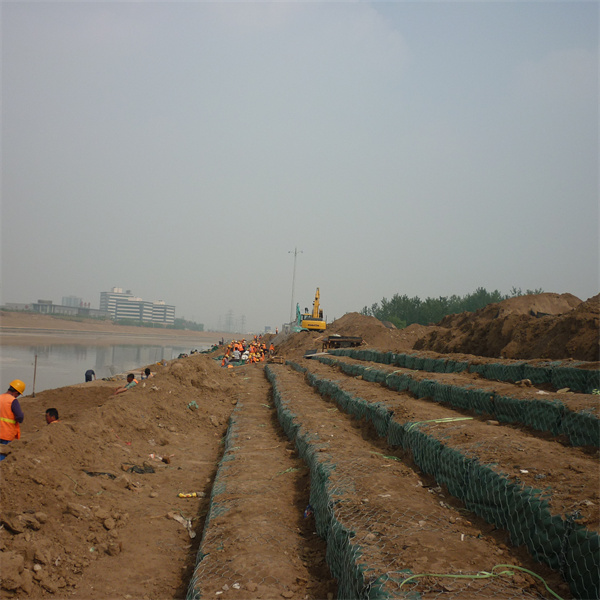Lùna . 07, 2024 00:55 Back to list
Innovative Gabion Solutions for Effective Shoreline Protection and Environmental Preservation
The Role of Gabion Structures in Shoreline Protection
Shoreline erosion is a pressing issue faced by coastal communities worldwide. The relentless action of waves and currents can diminish land, destroy habitats, and threaten human infrastructure. In the quest for effective solutions, gabion structures have emerged as a popular choice for shoreline protection. This article explores the benefits and applications of gabion shoreline protection systems provided by specialized manufacturers.
What Are Gabions?
Gabions are wire mesh containers filled with rocks, stones, or other materials. Traditionally used for retaining walls and riverbank stabilization, gabions have gained attention for their application in coastal engineering. Their flexibility and durability make them particularly suited for dynamic marine environments.
Advantages of Gabion Structures
1. Environmentally Friendly Gabions are often constructed using locally sourced materials, reducing transportation emissions and costs. They can also be designed to incorporate vegetation, allowing for a natural look and promoting local biodiversity.
2. Cost-Effectiveness Compared to traditional concrete barriers or other heavy-duty solutions, gabion structures are more economical due to lower material costs and simpler installation processes. They can be constructed quickly, making them a practical choice for urgent shoreline protection.
3. Flexibility and Adaptability Gabions can be easily shaped and scaled to fit various coastal landscapes and specific needs. Whether it is a gentle slope or a rocky cliff, gabions can adapt to the contours of the shoreline.
4. Erosion Control By absorbing and deflecting wave energy, gabion structures can significantly reduce erosion. They act as a buffer, protecting the land behind them from the aggressive forces of the sea.
5. Longevity While some shoreline protection solutions degrade over time, gabions are designed to last. The materials used in gabion construction are resistant to corrosion and degradation, ensuring that these structures endure harsh marine conditions.
gabion shoreline protection manufacturer

Applications of Gabion Shoreline Protection
Gabion structures can be utilized in various scenarios along coastal areas
- Seawalls and Breakwaters Gabions can be stacked to create effective seawalls and breakwaters that protect coastlines from wave action. - Beach Nourishment Gabions can be placed on the beach to stabilize sand and prevent erosion while allowing sediment to accumulate naturally.
- Coastal Vegetation Support Gabion systems can be combined with plantings to create living shorelines, providing habitat for wildlife while simultaneously protecting against erosion.
The Role of Manufacturers
The effectiveness of gabion shoreline protection largely depends on the quality and design of the product provided by manufacturers. Reputable manufacturers ensure that their gabion structures are manufactured from high-quality materials, such as galvanized steel or stainless steel, to withstand the harsh coastal environment. They also invest in research and development to continually improve the effectiveness and sustainability of their products.
Collaboration with engineers and coastal planners is crucial in designing gabion structures that meet specific project requirements. A knowledgeable manufacturer will understand the local conditions, such as tide patterns, wave action, and soil types, to tailor solutions that provide maximum protection and efficacy.
Conclusion
Gabion structures represent a versatile and effective solution for shoreline protection. Their environmental benefits, cost-effectiveness, and adaptability make them a preferred choice among engineers and coastal planners. As coastal erosion continues to threaten communities, partnering with experienced gabion shoreline protection manufacturers will be essential in developing effective, sustainable solutions for preserving our coastlines. Investing in such infrastructure not only protects human and environmental assets but also ensures the resilience of our coastal ecosystems for future generations.
-
HESCO Gabion Baskets for Coastal Erosion Prevention
NewsAug.22,2025
-
Longevity and Durability of River Rock Gabion Walls
NewsAug.22,2025
-
How to Integrate Gabion 3D Walls in Urban Planning
NewsAug.22,2025
-
Reno Mattress Gabion Applications in Civil Engineering
NewsAug.22,2025
-
How to Install Wire Mesh for Gabion Baskets Properly
NewsAug.22,2025
-
Best Materials for Filling a Chain Link Gabion
NewsAug.22,2025
-
Wire Mesh Thickness Impact on Gabion Wall Load Bearing
NewsAug.12,2025






